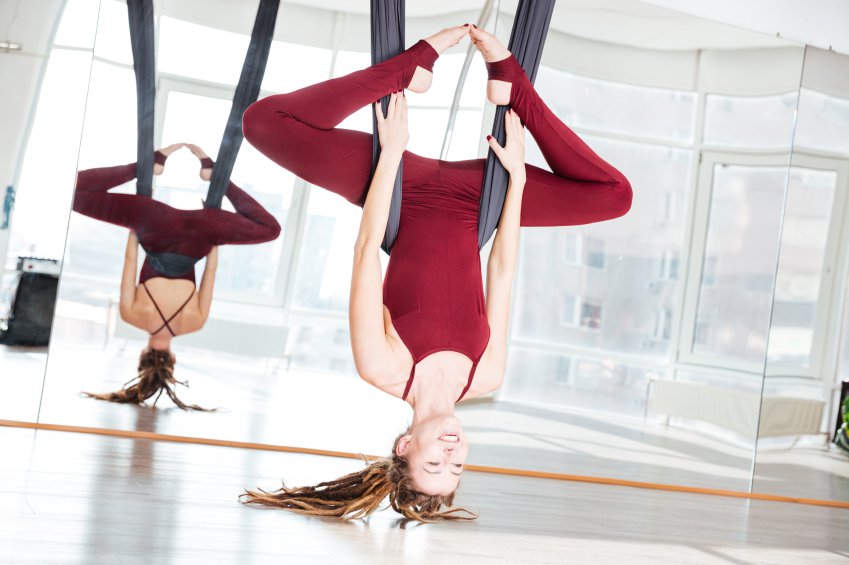Once upon a time, I had no interest in yoga at all. I thought yoga was all about meditating by candlelight and singing “oms” in unison with twenty or so strangers. As a health and fitness enthusiast, I was under the impression that a “good” workout had to include intense cardio and heavy weights — neither of which, to my knowledge, were present in most yoga classes. It wasn’t until a friend of mine invited me to an Aerial yoga class that I realized how little I actually knew about this ancient fitness practice.
First of all, I had no idea that there were different types of yoga with varying degrees of intensity. Aerial Yoga (also known as Anti-Gravity Yoga) just so happens to be the most rapidly growing variation, popping up in clubs all over the country. Aerial Yoga includes the use of silk hammocks to support participants as they move through various yoga poses, midair. When I walked into the class and saw lines of these silk hammocks suspended from the ceiling, I immediately thought of the acrobats in Cirque Du Soleil. I thought, if I didn’t get a real workout, at least I’d have fun swinging from the ceiling.
About fifteen minutes into the class I realized I had severely underestimated it. I was sweating, breathing hard and channeling all of my energy into holding what felt like a hundred different positions only a contortionist could pull off. However, I felt great! I felt muscles aching in places I couldn’t normally reach with a typical cardio or weight-centered workout. It was a completely different kind of experience. After class, I thanked my friend for introducing me to this new-found addiction and immediately went home to do some more research about this practice.
What I found was a recent study conducted by the American Council of Exercise that examines how effective Aerial Yoga is as a form of exercise. As I was still feeling the endorphin rush from class, I wasn’t surprised by the results. The study aimed to track how this form of yoga affected participants on a cardiovascular level after three 50-minute classes a week, for a total of six weeks. The study included sixteen participants (all women) of various ages who were asked to wear a calorimetric measurement system as well as a heart rate monitor during each class. The results were extremely positive. At the end of the six weeks, participants not only experienced weight loss and a reduction in body fat, but also an increase in “good” cholesterol and improved respiratory function. Furthermore, it was found that each participant had reduced their risk factors for cardiovascular disease.
The study went on to say that each 50-minute class burned about 300 calories! That was impressive enough for me to go back for another round. In fact, I now go about three times a week and each time I go I see a significant increase in attendance. It’s become so popular that my gym had to start offering three more Aerial Yoga classes to accommodate all the members jumping on this new trend.
From the health benefits to the positive, fun, intense environment Aerial Yoga provides, it might be time to consider adding it to your facility’s programming. The flexibility of the hammocks allow for all different fitness levels to participate. I highly recommend it!
If you are yoga business offering anti-yoga classes make sure to check out our yoga studio software to make class check-in quick and easy.
